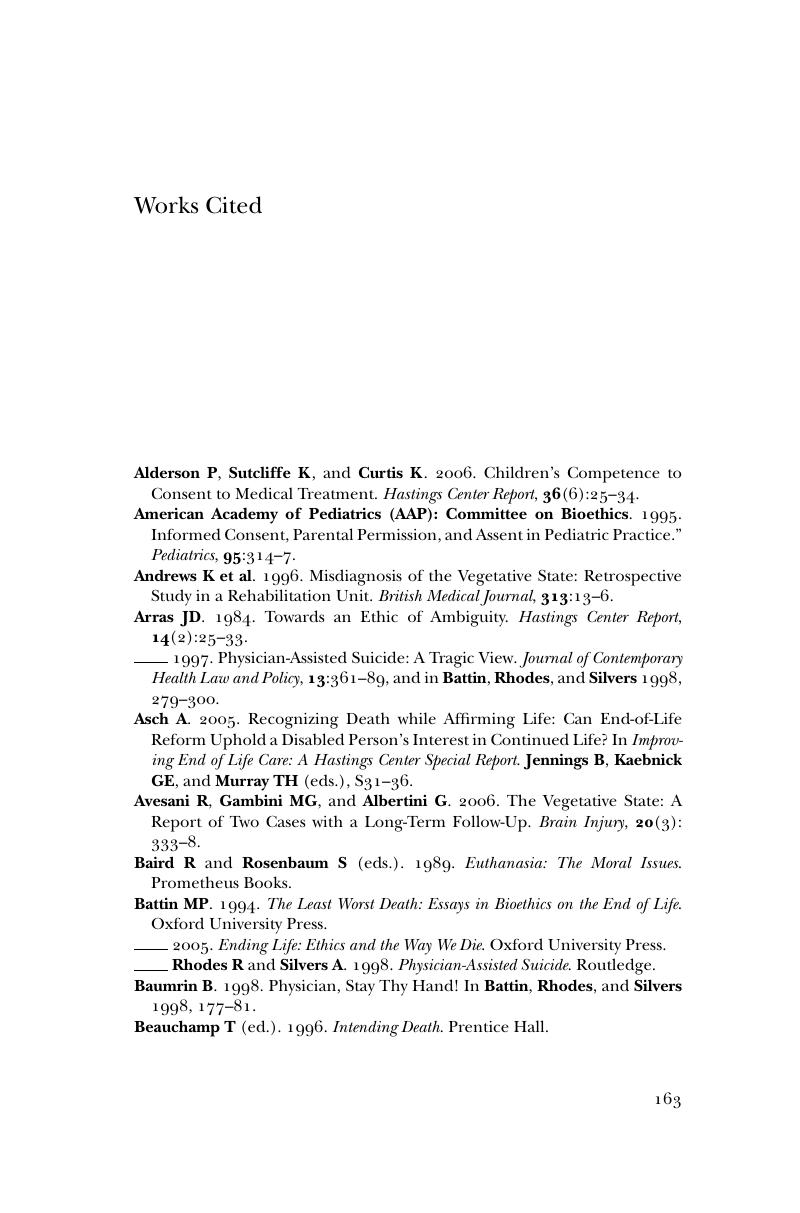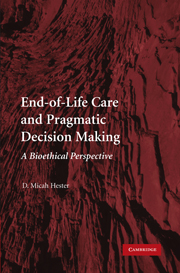Works Cited
Published online by Cambridge University Press: 05 June 2012
Summary

- Type
- Chapter
- Information
- End-of-Life Care and Pragmatic Decision MakingA Bioethical Perspective, pp. 163 - 176Publisher: Cambridge University PressPrint publication year: 2009



